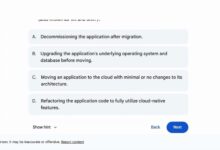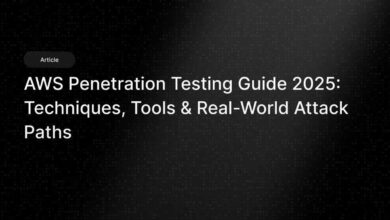AWS Cost Calculator: 7 Powerful Tips to Master Your Cloud Spending
Want to predict your AWS bill with precision? The AWS Cost Calculator is your ultimate tool for estimating, planning, and optimizing cloud expenses—without any surprises.
What Is the AWS Cost Calculator?

The AWS Cost Calculator, officially known as the AWS Pricing Calculator, is a free, web-based tool provided by Amazon Web Services to help users estimate the cost of using AWS resources before deployment. It allows businesses, developers, and architects to model their cloud infrastructure and forecast monthly or annual expenses based on selected services, regions, usage patterns, and configurations.
This tool is essential for anyone planning to migrate to AWS, scale existing workloads, or simply understand the financial impact of their cloud architecture decisions. Unlike rough estimates or third-party tools, the AWS Cost Calculator pulls real-time pricing data directly from AWS, ensuring accuracy and reliability.
How the AWS Cost Calculator Works
The calculator operates on a modular system where users add specific AWS services—like EC2 instances, S3 storage, Lambda functions, or RDS databases—and configure them with real-world parameters such as instance type, storage capacity, data transfer volume, and usage hours.
Each service module allows granular input, including:
- Instance family and size (e.g., t3.micro, m5.large)
- Operating system (Linux, Windows, RHEL, etc.)
- Storage type (SSD, magnetic, EBS, S3 Standard vs Glacier)
- Network egress (data transferred out per month)
- Region selection (pricing varies by region)
- Reserved Instance or Savings Plans eligibility
Once configured, the calculator aggregates all costs into a detailed summary, often broken down by service, region, and monthly/annual totals.
Differences Between AWS Cost Calculator and TCO Calculator
It’s important to distinguish the AWS Cost Calculator from the AWS TCO (Total Cost of Ownership) Calculator. While both are financial planning tools, they serve different purposes:
- AWS Cost Calculator: Focuses on estimating the cost of running specific AWS services in the cloud.
- TCO Calculator: Compares the cost of running on-premises infrastructure versus migrating to AWS, factoring in hardware, maintenance, power, and labor.
“The AWS Cost Calculator doesn’t just estimate costs—it empowers teams to make financially intelligent architecture decisions from day one.” — AWS Solutions Architect
Why Use the AWS Cost Calculator?
Using the AWS Cost Calculator isn’t just about avoiding bill shock—it’s about strategic financial planning in the cloud. With AWS offering over 200 services across multiple regions, predicting costs manually is nearly impossible. The calculator brings clarity, transparency, and control.
Whether you’re a startup estimating first-month costs or an enterprise planning a multi-region deployment, this tool provides actionable insights.
Prevent Budget Overruns
One of the biggest challenges in cloud computing is unexpected spending. Without proper planning, a misconfigured EC2 instance or unmonitored data transfer can lead to thousands in unplanned charges.
The AWS Cost Calculator helps prevent this by forcing users to think through every component of their architecture. By modeling usage upfront, teams can identify cost hotspots—like high I/O databases or large data egress—and optimize before deployment.
For example, choosing us-east-1 over ap-southeast-2 might save 15% on EC2 costs, while using S3 Intelligent-Tiering instead of S3 Standard could reduce storage bills by up to 30% for infrequently accessed data.
Support Business Case Development
When proposing a new project or migration, IT leaders need hard numbers to justify cloud investments. The AWS Cost Calculator generates professional-grade cost estimates that can be exported and shared with stakeholders.
These estimates are crucial for:
- Securing budget approval
- Comparing deployment scenarios (e.g., monolithic vs microservices)
- Presenting ROI projections to executives
- Aligning with finance and procurement teams
By providing a clear, itemized breakdown, the calculator turns abstract cloud concepts into concrete financial plans.
Step-by-Step Guide to Using the AWS Cost Calculator
Using the AWS Cost Calculator is straightforward, but mastering it requires attention to detail. Here’s a comprehensive walkthrough to help you get the most accurate estimates.
Step 1: Access the Calculator
Go to the official AWS Pricing Calculator website. No login is required to start building your estimate, though saving or sharing requires an AWS account.
You’ll be greeted with a clean interface offering two main options:
- Create estimate: Start from scratch.
- Use a template: Choose from pre-built scenarios like “Web Application,” “Data Lake,” or “Machine Learning.”
Templates are great for beginners, but custom estimates offer more control.
Step 2: Add AWS Services
Click “Add Service” to begin building your architecture. You can search for services by name or browse categories like Compute, Storage, Database, Networking, and Analytics.
Let’s say you’re building a simple web app. You’d likely add:
- Amazon EC2 (for web and application servers)
- Amazon RDS (for the database)
- Amazon S3 (for static assets and backups)
- Amazon CloudFront (for content delivery)
- AWS Lambda (for serverless functions)
- Amazon Route 53 (for DNS)
Each service added appears in your estimate with configurable fields.
Step 3: Configure Each Service Accurately
This is where precision matters. For each service, fill in realistic usage assumptions. For example:
- EC2: Select instance type (e.g., t3.medium), OS, number of instances, and average runtime (e.g., 730 hours/month for always-on).
- RDS: Choose database engine (MySQL, PostgreSQL), instance size, storage (GB), and backup retention.
- S3: Define storage class, monthly data upload/download, and number of GET/PUT requests.
- CloudFront: Input monthly data transfer out and number of HTTP/HTTPS requests.
Don’t guess—use historical data, load testing results, or industry benchmarks to inform your inputs.
Advanced Features of the AWS Cost Calculator
While the basic functionality is user-friendly, the AWS Cost Calculator offers several advanced features that can significantly improve estimate accuracy and usability.
Using Tags for Cost Allocation
The calculator allows you to apply tags to your estimate, such as Environment=Production, Project=CustomerPortal, or Department=Marketing. While these don’t affect pricing, they help organize complex estimates and align with AWS’s native tagging system for cost allocation later.
When you eventually use AWS Cost Explorer or AWS Budgets, these tags make it easier to track spending by project, team, or application.
Modeling Reserved Instances and Savings Plans
One of the most powerful cost-saving mechanisms in AWS is committing to usage via Reserved Instances (RIs) or Savings Plans. The AWS Cost Calculator lets you model these commitments to see potential savings.
For example, if you plan to run a m5.xlarge instance 24/7 for a year, you can select:
- No reservation: Pay On-Demand pricing (~$0.192/hr in us-east-1)
- 1-year Reserved Instance (Light Utilization): Save ~28%
- 1-year Savings Plan (EC2): Save up to 40%
- 3-year option: Save up to 60%
The calculator instantly updates your total cost, showing the break-even point and payback period.
“Teams that model Reserved Instances in the AWS Cost Calculator typically uncover 30–50% savings on compute workloads.” — Cloud Financial Analyst
Exporting and Sharing Estimates
Once your estimate is complete, you can export it as a CSV file or share it via a secure link. This is invaluable for collaboration with developers, managers, or clients.
The exported CSV includes:
- Detailed line items for each service
- Monthly and annual cost projections
- Configuration details (instance types, regions, etc.)
- Any applied discounts or reservations
This transparency fosters better decision-making and accountability across teams.
Common Mistakes When Using the AWS Cost Calculator
Even experienced users make errors that lead to inaccurate estimates. Avoiding these pitfalls is crucial for reliable forecasting.
Underestimating Data Transfer Costs
One of the most common oversights is ignoring data transfer fees. While inbound data is free on AWS, outbound data (especially to the internet) can be expensive.
For example, transferring 10 TB of data out to the internet per month from S3 in us-east-1 costs:
- First 10 TB: $850/month
- Next 40 TB: $550/month
- Over 50 TB: $400/month
Without modeling this in the AWS Cost Calculator, a video streaming startup could face a $10,000 annual surprise.
Solution: Always include realistic egress estimates and consider using CloudFront to reduce costs via caching.
Ignoring Regional Price Differences
Prices for the same EC2 instance can vary by up to 30% between regions. For example, a t3.small instance costs:
- $0.0208/hour in
us-east-1 - $0.0232/hour in
ap-southeast-1 - $0.0266/hour in
eu-west-1
While latency and compliance may dictate region choice, the AWS Cost Calculator helps quantify the financial trade-offs.
Forgetting Hidden or Indirect Costs
Some AWS costs aren’t immediately obvious but can add up:
- EBS snapshot storage
- S3 request charges (GET, PUT, LIST)
- NAT Gateway hourly fees and data processing
- ELB (Elastic Load Balancer) hourly cost + LCU (Load Balancer Capacity Units)
- CloudWatch Logs ingestion and retention
Always review the full list of charges for each service in the AWS documentation and include them in your calculator model.
Integrating the AWS Cost Calculator with Other AWS Tools
The AWS Cost Calculator is just the beginning of cost management. To get full visibility and control, integrate it with other AWS financial tools.
AWS Budgets: From Estimate to Monitoring
Once your application is live, use AWS Budgets to set custom cost and usage alerts. You can create budgets based on your calculator estimates and receive notifications when actual spending exceeds thresholds.
For example:
- Set a monthly budget of $1,500 for your web app
- Get email alerts at 80%, 90%, and 100% of budget
- Include forecasted spend to catch overruns early
This closes the loop between planning (calculator) and monitoring (budgets).
AWS Cost Explorer: Analyze Real Usage
AWS Cost Explorer provides detailed visualizations of your actual AWS spending over time. Compare your original calculator estimate with real data to identify variances.
Common insights include:
- Which services are over- or under-estimated?
- Are Reserved Instances being fully utilized?
- Is there idle or underused capacity?
This feedback loop improves future estimates and drives optimization.
AWS Trusted Advisor: Get Cost Optimization Recommendations
AWS Trusted Advisor analyzes your live environment and provides actionable recommendations, such as:
- Downsizing underutilized EC2 instances
- Purchasing Reserved Instances for steady-state workloads
- Deleting unattached EBS volumes
- Enabling S3 lifecycle policies
Use these insights to refine your next AWS Cost Calculator model.
Best Practices for Accurate AWS Cost Estimation
To get the most value from the AWS Cost Calculator, follow these proven best practices.
Use Realistic Usage Assumptions
Don’t assume worst-case or best-case scenarios. Base your inputs on:
- Load testing results
- Historical data from on-premises systems
- Industry benchmarks (e.g., average session duration, page views per user)
- Seasonal traffic patterns (e.g., holiday spikes)
For example, if your app averages 10,000 daily users with 5 pages per session, model that—not 1 million users.
Review and Update Estimates Regularly
Cloud environments evolve. New features, traffic growth, or architectural changes impact costs. Revisit your AWS Cost Calculator estimate:
- Quarterly for stable workloads
- Monthly for growing applications
- After major releases or migrations
Keep a version history to track cost trends over time.
Leverage AWS Support and Partners
If you’re unsure about configurations or pricing, AWS offers free tools and paid support:
- AWS Support Plans: Business and Enterprise tiers include architectural and cost optimization reviews.
- AWS Partner Network (APN): Consulting partners can help build accurate models and optimize spend.
- AWS Well-Architected Tool: Reviews workloads across five pillars, including cost efficiency.
These resources complement the AWS Cost Calculator with expert guidance.
Alternatives and Complements to the AWS Cost Calculator
While the AWS Cost Calculator is the official tool, several alternatives and complementary solutions exist.
Third-Party Cost Estimation Tools
Tools like CloudHealth by VMware, Datadog Cloud Cost Management, and PolicyMapper offer advanced features such as:
- Multi-cloud cost comparison (AWS, Azure, GCP)
- Real-time cost monitoring
- Automated optimization recommendations
- Integration with CI/CD pipelines
These are ideal for enterprises managing complex, multi-cloud environments.
Custom Scripts and Infrastructure-as-Code
For teams using Terraform, AWS CloudFormation, or Pulumi, you can build cost estimation directly into your IaC workflows.
Tools like Infracost integrate with Terraform to show cost estimates during pull requests, enabling cost-aware development.
Example: A developer proposes adding a new RDS instance—Infracost shows it will cost $120/month before the code is deployed.
“The future of cloud cost management is proactive, not reactive. Tools like Infracost and the AWS Cost Calculator are making that possible.” — DevOps Engineer
What is the AWS Cost Calculator used for?
The AWS Cost Calculator is used to estimate the monthly or annual cost of running AWS services based on specific configurations, usage patterns, and regions. It helps users plan budgets, compare deployment options, and avoid unexpected charges by modeling cloud infrastructure before deployment.
Is the AWS Cost Calculator accurate?
The AWS Cost Calculator provides highly accurate estimates based on current AWS pricing and user inputs. However, real-world costs may vary due to unanticipated usage, data transfer spikes, or unconfigured services. For best results, use realistic assumptions and update estimates regularly.
Can I save and share my AWS Cost Calculator estimates?
Yes, you can save your estimates by creating an AWS account and logging in. Once saved, you can share them via a secure link or export them as CSV files for use in reports or presentations.
Does the AWS Cost Calculator include taxes and support fees?
No, the AWS Cost Calculator does not include taxes, support fees, or additional charges like professional services. These must be estimated separately based on your region and AWS support plan.
How often should I update my cost estimate?
You should update your AWS Cost Calculator estimate whenever there’s a significant change in your architecture, traffic, or business requirements. For active projects, review estimates monthly or quarterly to ensure alignment with actual spending.
Mastering the AWS Cost Calculator is a critical skill for any cloud professional. It transforms guesswork into data-driven financial planning, enabling smarter architecture choices, better budget control, and stronger business cases. By understanding its features, avoiding common mistakes, and integrating it with other AWS tools, you can take full control of your cloud spending. Whether you’re launching a startup or managing enterprise workloads, the AWS Cost Calculator is your first line of defense against cost overruns—and your best tool for building a cost-efficient cloud future.
Further Reading:









